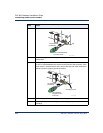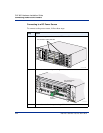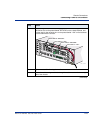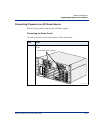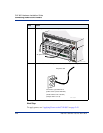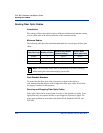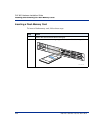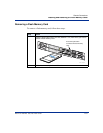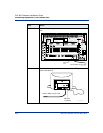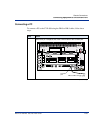
Routing the Cables
2-28 296-1011-202 Rel. 5.0, Doc. Rev. 02.01
CVX 600 Hardware Installation Guide
Routing Fiber Optic Cables
Introduction
The routing of fiber optic cables requires different considerations than the routing
of wire cables, due to the delicate material of the transmission line.
Minimum Radius
The following table gives the minimum bend radius for several types of fiber optic
cable:
Rack Standoff Brackets
To ensure that the fiber optic cable is properly secured to the chassis, a
rack-mounted bracket may be used to support the fiber optic cable. Nortel does
not supply a bracket for this purpose.
Securing and Wrapping Fiber Optic Cables
Fiber optic cables can be secured with tie wraps, if not applied too tightly. Your
application may also require the fiber to be wrapped in a protective paper. Tie
wraps must be fitted in accordance with Nortel Work Standards WS-001 and
WS-4024.
Cable/Fiber Type Number of Fibers
Minimum Bend Radius
(normal handling)
Minimum Bend
Radius (static load)
Simplex 1 35 mm 50 mm
Duplex 2 70 mm 140 mm
Quad 4 85 mm 160 mm
Note: The minimum radius must be maintained at all times, including
while routing the cable and managing slack cable.



